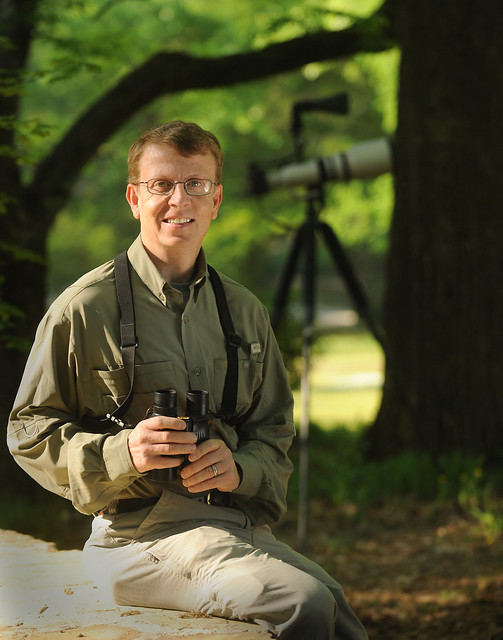Auburn researcher, curator of birds refutes claim that ivory-billed woodpeckers are now extinct
Article body
The Associated Press recently reported that the U.S. government declared 23 species extinct, including the ivory-billed woodpecker that once frequently inhabited the Southeast. But according to Auburn University biological sciences professor and researcher Geoffrey Hill, the bird’s inclusion on the list was premature. Hill, the university’s curator of birds, contends that the woodpecker is simply effective at eluding researchers and conservationists. Hill is a fellow in the American Association for the Advancement for Science and the American Ornithological Society. He teaches ornithology—a branch of zoology dealing with the study of birds—among his courses and is the author of the 2007 book “Ivorybill Hunters: The Search for Proof in a Flooded Wilderness.” He discussed the U.S. Fish and Wildlife Service’s report, the effect of urbanization and climate change on bird habitats and more in this edition of Expert Answers.
Given your experience looking for ivory-billed woodpeckers, do you think that this species is extinct?
No. This will be the third time that ivory-billed woodpeckers have been named as extinct. Ornithologists ruled the bird extinct after “the last pair” was shot in Florida in 1924. Then, a Louisiana state representative shot one in Louisiana in 1932 just to prove they were not extinct. When that small population disappeared, they were for the second time declared extinct, until a Cornell University group filmed one in Arkansas in 2004. The recent declaration that the birds are extinct is simply the follow-up to that 2004 discovery—the end of round three. I think this cycle will continue.
Eleven of the 23 species listed are birds. What do you think that says about their fragility in the ever-changing world we live in?
Nine of the 11 birds proclaimed to be extinct are Pacific Island birds, and their story is completely different than the two mainland birds. Bachman’s sparrows, one of the two mainland bird species, likely were specialists of canebrake habitat, which was the first habitat to be plowed in when people of European descent moved into the Southeast. They likely disappeared with their habitat more than 100 years ago. In contrast, the ivory-billed woodpecker was shot to near extinction. Habitat loss had very little to do with the decline of ivory-billed woodpeckers. There has always been extensive habitat for ivory-billed woodpeckers in the southeastern U.S. These birds were systematically hunted until all vulnerable individuals were dead. The few birds that remained were very good at staying away from people. They still are.
How rare is it for wildlife officials to make declarations like this?
The good news is that in my lifetime (and I’m not young), it is very rare. Nearly every endangered species of bird in the continental U.S. is recovering—becoming more common. It has become much more common to hear success stories of rare birds—bald eagles no longer endangered; Kirtland’s warblers colonizing new states; peregrine falcons returning to nest on buildings in large cities. It was irresponsible activities in the 18th and early 19th centuries that wiped out, or nearly wiped out, Bachman’s warblers and ivory-billed woodpeckers.
Some believe climate change could make extinctions more common in the years to come. What are your thoughts on that?
For the immediate future of birds in the U.S., I’m much more concerned about urbanization, intensification of agriculture and poor land use than I am about climate change. From the standpoint of bird conservation, climate change is like a runaway train approaching from a distance. You can hear the rumble and know that eventually it will be trouble, but it is hard to see major effects yet.
How possible is it that the ivory-billed woodpecker could make a reappearance?
Since ivory-billed woodpeckers are still flying around forests, at least in Florida and Louisiana and probably in Alabama and Mississippi as well, I would say that it is just a matter of time.
Auburn University is a nationally ranked land grant institution recognized for its commitment to world-class scholarship, interdisciplinary research with an elite, top-tier Carnegie R1 classification, life-changing outreach with Carnegie’s Community Engagement designation and an undergraduate education experience second to none. Auburn is home to more than 30,000 students, and its faculty and research partners collaborate to develop and deliver meaningful scholarship, science and technology-based advancements that meet pressing regional, national and global needs. Auburn’s commitment to active student engagement, professional success and public/private partnership drives a growing reputation for outreach and extension that delivers broad economic, health and societal impact.






